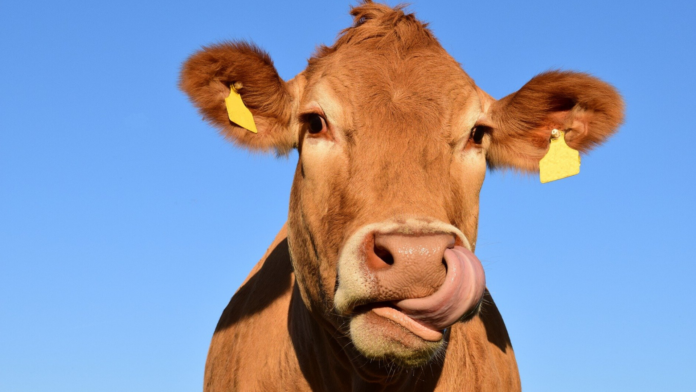Life as a dairy farmer is tough. With long days and tight margins, keeping the herd healthy is critical. Now researchers are developing a test to help farmers identify mastitis, a common disease in dairy cows, and avoid unnecessary antibiotic use.
Mastitis is a mammary gland infection that can cause painful udder inflammation, lower milk yields, and result in contaminated milk. It’s a common problem on dairy farms, and one that is difficult and expensive to treat.
In fact, a single mastitis case will cost a Canadian farmer $660 in medication, labour and lost milk production, explains immunobiologist Burim Ametaj, a University of Alberta professor in the Faculty of Agricultural, Life & Environmental Sciences.
To make matters worse, mastitis can exist ‘subclinically’ and be passed around a herd with no visible symptoms. This subclinical mastitis can only be detected by testing milk for abnormal cells, a test usually done in specialized labs.
According to Ametaj, 90% of farmers take preventative measures to avoid the risk of mastitis. Many proactively treat entire herds with antibiotics, even though only an average of 23% of cows need them.
In this age of antibiotic resistance, this blanket use of antibiotics is increasingly concerning. With this in mind, being able to identify affected animals, and just treat those that need it, is extremely desirable. Plus, the researchers suggest it could save milk producers millions of dollars.
In search of a way to detect mastitis before symptoms appear, Ametaj and team focused on an accessible commodity: urine. To be exact, they examined 186 metabolites in the urine of healthy and diseased cows.
Metabolites are chemicals created by the body as part of normal functioning. But if something is amiss, this is often reflected in metabolite changes in urine. In this case, the team spotted 20 metabolites that differ between the healthy and diseased groups.
Published in Research in Veterinary Science, the researchers believe these chemicals could serve as a screening tool to pinpoint the animals that need antibiotic treatment.
Although still in development, the test works by mixing urine samples with a test solution that changes colour depending on the chemicals detected, and their quantities. With this, farmers could test their herd and identify mastitis with 95% accuracy, all without leaving the farm.
This relatively simple solution to a common and costly disease could protect the health of dairy cows, and help to address growing concerns about antibiotic overuse.








































